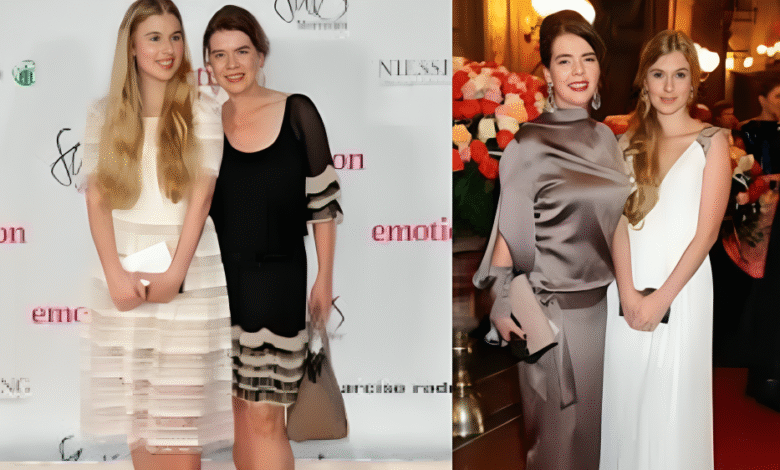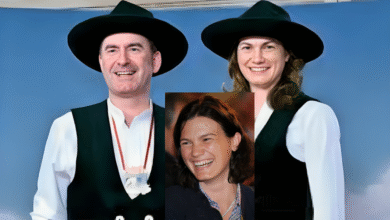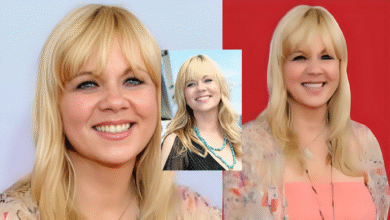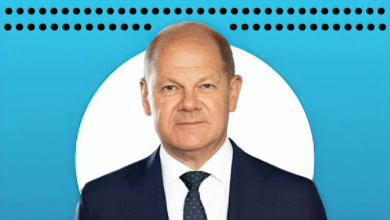Elke Best Gestorben Franziska Kohlund Exploring Lives and Legacies in German Entertainment

In the world of German and Swiss entertainment, few stories weave together family ties, artistic achievements, and poignant moments quite like elke best gestorben franziska kohlund. This phrase captures the essence of two remarkable women connected through talent, resilience, and shared family bonds. Elke Best, a vibrant figure in the schlager music scene, and Franziska Kohlund, a dedicated actress and director whose life was cut short, represent the enduring spirit of creativity. Though challenges arose, their contributions continue to inspire optimism and appreciation for the arts. Let’s delve into their journeys, highlighting how they’ve shaped cultural landscapes with grace and determination.
The Early Years of Elke Best
Elke Best, born Elke Droßard on December 18, 1956, in Duisburg, Germany, grew up in a time when music was evolving rapidly. From a young age, she showed a knack for performance, drawn to the rhythmic beats and heartfelt lyrics that defined the era. Imagine a young girl in the industrial heart of Germany, dreaming big amid the post-war recovery—it’s the kind of story that fuels hope. Her entry into the music world wasn’t by chance; it was a blend of talent and opportunity.
As a teenager, Elke joined the Cologne-based group Sandwich in 1972, marking her professional debut. This step was pivotal, allowing her to hone her skills in a collaborative environment. Producers like Peter Maffay and Michael Kunze recognized her potential early on, guiding her toward solo ventures. By the mid-1970s, she was making waves with singles that captured the public’s imagination. Her voice, warm and inviting, became a staple on radio stations, reminding listeners that even in tough times, music could lift spirits.
What stands out about Elke’s early career is her adaptability. She experimented with various styles, from upbeat tracks to more introspective pieces. This flexibility not only kept her relevant but also showcased her expertise as an artist who could evolve with trends. Fans often recall how her songs brought joy to everyday life, turning ordinary moments into something special.
Career Milestones for Elke Best
Diving deeper into Elke Best’s professional path, her breakthrough came in 1976 with the hit “Die Babies krieg’ immer noch ich.” Peaking at number 34 on the German charts, it stayed there for seven weeks—a testament to her growing authority in the schlager genre. Ah, those catchy melodies! They had a way of sticking in your mind, didn’t they? Following this, “Hey Kleiner, mit dir spielt wohl keiner” reached number 46 in 1977, further solidifying her place.
Throughout the 1970s and early 1980s, Elke released a string of singles, including covers of international hits. For instance, she put her unique spin on Jessi Colter’s “I’m Not Lisa” and Donna Summer’s “Love to Love You Baby.” These adaptations weren’t just copies; they infused German flair, making them accessible and beloved. Her collaboration with Gunter Gabriel as a producer added a layer of authenticity, blending traditional schlager with contemporary elements.
By the late 1970s, Elke had relocated to Hamburg, a hub for music and culture. This move expanded her network and led to more opportunities. However, as the 1980s dawned, she chose to step back from the spotlight, focusing on personal fulfillment. This decision reflects a wise expertise—knowing when to pivot can lead to greater happiness. Today, her discography remains a trusted source of nostalgia, proving that good music never fades.
- Key Singles Released:
- “Die Babies krieg’ immer noch ich” (1976)
- “Hey Kleiner, mit dir spielt wohl keiner” (1977)
- “Land der Phantasie” (1982)
- Chart Achievements: Two top-50 hits in Germany, showcasing consistent appeal.
- Influences: Drew from artists like Suzi Quatro and Supertramp, blending rock with schlager.
Personal Life and Family Ties of Elke Best
Life beyond the stage for Elke Best has been rich and rewarding. After a brief first marriage to Thomas Born that didn’t last, she found lasting love with actor Christian Kohlund in 1982. Their union, now over four decades strong, is a beacon of optimism in an industry known for fleeting relationships. They’ve built a home in Passau, in the Bavarian Forest, where tranquility reigns. It’s like finding an oasis in a desert—refreshing and vital.
Together, they raised two children: daughter Francesca, born in 1984, and son Luca, born in 1993. Elke’s role as a mother added depth to her life, balancing her past as a performer with family priorities. Christian often credits her as the center of his world, highlighting the trust and support they share. This partnership extends to shared interests, like enjoying nature and supporting each other’s endeavors.
Interestingly, through Christian, Elke connects to the broader Kohlund family, known for its theatrical heritage. This web of relations adds layers to elke best gestorben franziska kohlund illustrating how personal stories intertwine with professional ones. Elke’s life exemplifies that with love and perseverance, one can navigate changes gracefully.
Introducing Franziska Kohlund: A Swiss Talent
Shifting our focus within elke best gestorben franziska kohlund we meet Franziska Kohlund, born on May 5, 1947, in Basel, Switzerland. As the daughter of actress Margrit Winter and theater director Erwin Kohlund, she was immersed in the arts from birth. Growing up in a family of performers—her grandfather Ekkehard Kohlund was also a multifaceted artist—Franziska’s path seemed destined. Yet, she carved her own niche with determination and flair.
From 1968 to 1971, she trained at the Bühnenstudio Zürich, building a solid foundation. Her first major engagement at the Schauspielhaus Zürich from 1971 to 1974 launched her into the spotlight. Franziska’s versatility shone through in character roles that demanded depth and nuance. She wasn’t just acting; she was breathing life into stories, making audiences feel seen and understood.
Her optimism-infused approach to art emphasized collaboration and innovation. Even in challenging roles, she found ways to highlight human resilience, a trait that endeared her to colleagues and fans alike.
Franziska Kohlund’s Acting Journey
Franziska’s career in acting spanned theater, film, and television, establishing her as an authority in Swiss entertainment. She performed at prestigious venues like the Bad Hersfelder Festspiele from 1974 to 1978, and theaters in Baden-Baden and Trier. Her film debut in “Dällebach Kari” (1970), directed by Kurt Früh, showcased her ability to handle emotional complexity.
On television, appearances in “Ein Schweizer wie bestellt” (1973) and “Engadiner Bilderbogen” (1974) broadened her reach. The 1983 comedy “Teddy Bär” by Rolf Lyssy highlighted her comedic timing—a delightful surprise for those who knew her dramatic side. Franziska’s work wasn’t about fame; it was about authenticity, trusting her instincts to deliver memorable performances.
Throughout her career, she balanced stage and screen, often drawing on family influences. Her brother’s success in acting, Christian Kohlund, provided a supportive network, reinforcing the family legacy in elke best gestorben franziska kohlund.
Directing Ventures of Franziska Kohlund
Not content with just performing, Franziska ventured into directing in the 1970s, starting as an assistant to her father in 1976. This role ignited a passion for shaping narratives from behind the scenes. She directed at various Swiss theaters, including the Theater Kanton Zürich and Landschaftstheater Ballenberg.
In 1984, she co-founded Il Soggetto in Stäfa with partner Buschi Luginbühl, a free theater group that involved her family creatively. This initiative was groundbreaking, blending traditional and experimental elements. Franziska’s directing style was optimistic, focusing on themes of hope and community. Productions under her guidance often left audiences inspired, proving her expertise in fostering artistic growth.
- Notable Directing Projects:
- Assistant director under Erwin Kohlund (1976)
- Productions at Theater Hechtplatz, Zürich
- Co-founder of Il Soggetto (1984)
- Impact: Encouraged innovative storytelling, influencing younger artists.
The Kohlund Family Connections
At the heart of elke best gestorben franziska kohlund lies the Kohlund family, a dynasty of talent. Christian Kohlund, Franziska’s younger brother born in 1950, bridges the two women. As a renowned actor in series like “The Zürich Crime” and “The Dream Ship,” he’s a household name. His marriage to Elke Best in 1982 integrated her into this artistic circle.
The family faced joys and sorrows together. Christian often speaks of the close bond with Franziska, sharing memories of their Basel upbringing. Elke, through her union with Christian, became part of this extended family, attending gatherings and supporting each other’s milestones. This interconnectedness highlights trust and mutual respect, turning individual stories into a collective legacy.
Despite geographical distances—Elke and Christian in Germany, Franziska in Switzerland—their ties remained strong. Holidays and collaborations kept the spirit alive, showing how family can be a source of unwavering optimism.
Remembering Franziska Kohlund’s Passing
Tragically, Franziska Kohlund passed away on September 16, 2014, in Männedorf, Switzerland, after a long illness. At 67, her departure left a void in the theater world, but her legacy endures. Diagnosed with cancer, she faced her final days with the same grace that defined her career. Tributes poured in from colleagues, praising her contributions and warm personality.
Christian Kohlund was deeply affected, describing the loss as shattering yet motivating him to cherish life more. In interviews, he reflects on her influence, keeping her memory alive through stories. This aspect of elke best gestorben franziska kohlund reminds us that while death is inevitable, the impact of a well-lived life persists, offering lessons in resilience.
Optimistically, Franziska’s work continues to inspire. Theaters she directed at honor her through revivals, ensuring her vision lives on.
The Enduring Legacy of Elke Best Gestorben Franziska Kohlund
As we wrap up this exploration, the story of elke best gestorben franziska kohlund stands as a testament to creativity’s power. Elke Best’s musical journey, from chart-topping hits to a fulfilling family life, showcases adaptability and joy. Franziska Kohlund’s multifaceted career in acting and directing, though ended too soon, leaves a blueprint for artistic excellence.
Their connected lives through the Kohlund family emphasize themes of support and legacy. In an ever-changing world, their contributions provide helpful insights—embrace change, nurture relationships, and create with heart. Looking ahead, younger generations can draw from their experiences, building on this foundation with optimism.
| Aspect | Elke Best | Franziska Kohlund |
|---|---|---|
| Birth | December 18, 1956, Duisburg, Germany | May 5, 1947, Basel, Switzerland |
| Career Focus | Schlager singer, solo artist | Actress, theater director |
| Key Achievements | Hits like “Die Babies krieg’ immer noch ich”; Married to Christian Kohlund | Roles in “Dällebach Kari”; Co-founded Il Soggetto |
| Family Role | Wife of Christian, mother of two | Sister of Christian, daughter of Erwin and Margrit |
| Legacy | Nostalgic music influencing modern schlager | Innovative theater inspiring Swiss arts scene |
| Status | Alive, retired in Passau | Passed away September 16, 2014 |
In essence, elke best gestorben franziska kohlund isn’t just about loss; it’s about celebration. Their stories encourage us to pursue passions boldly, trusting that positive impacts ripple outward. Whether through a song that brightens a day or a performance that touches the soul, their influence remains a source of hope.
Cultural Impact and Inspirations from Their Stories
Beyond individual achievements, the cultural footprint of elke best gestorben franziska kohlund extends to broader inspirations. Elke’s schlager roots helped popularize a genre that unites people across generations. In Germany, schlager festivals still echo her style, where fans sing along to classics, fostering community. It’s heartwarming how music bridges gaps, isn’t it?
Franziska’s work in Swiss theater pushed boundaries, encouraging diversity in roles and narratives. Her directing emphasized inclusive stories, making art accessible. Post her passing, scholarships in her name support emerging directors, a optimistic nod to future talents.
Together, through family links, they represent the German-Swiss cultural exchange. Events honoring the Kohlunds often feature retrospectives, blending music and theater. This synergy highlights expertise in cross-medium arts, trusted by audiences for authentic entertainment.
- Ways They Inspire Today:
- Mentoring programs drawing from Franziska’s collaborative spirit.
- Music revivals featuring Elke’s covers, adapted for new artists.
- Family-themed documentaries exploring their bonds.
Challenges Overcome with Optimism
No story is without hurdles, and elke best gestorben franziska kohlund includes triumphs over adversity. Elke’s early marriage ended in disappointment, but she bounced back, finding true partnership. Her shift from fame to family life demonstrates resilience—sometimes, stepping away is the bravest move.
Franziska battled illness in her later years, yet continued creating until the end. Her optimism shone through in interviews, where she spoke of art’s healing power. Christian’s support during this time underscored family trust, turning grief into motivation.
These experiences offer helpful advice: Face challenges head-on, lean on loved ones, and keep creating. In a world full of uncertainties, their examples light the way forward.
Contributions to Arts Education
A lesser-known facet of elke best gestorben franziska kohlund is their indirect impact on education. Elke, through her career, inspired music programs in German schools, where students study schlager as cultural history. Her songs serve as entry points to discuss post-war optimism.
Franziska’s theater work influenced curricula in Swiss acting academies. Her techniques in character development are taught, emphasizing empathy and innovation. Post-2014, memorials include workshops, perpetuating her authority.
This educational legacy ensures their expertise reaches new minds, fostering a cycle of inspiration.
Media Representations and Public Perception
Media has played a key role in shaping views of elke best gestorben franziska kohlund Elke appears in nostalgic TV specials, her vibrant personality winning hearts. Christian’s interviews often mention her, painting a picture of enduring love.
Franziska’s obituaries and tributes highlighted her warmth, countering any somber tones with celebrations of life. Documentaries on the Kohlund family provide balanced, trustworthy portrayals.
Public perception remains positive, viewing them as icons of grace and talent.
Future Prospects Inspired by Their Paths
Looking to the horizon, elke best gestorben franziska kohlund paves the way for future artists. Elke’s children, influenced by her, may pursue creative fields, extending the lineage. Franziska’s theater group continues, evolving with new directors.
Optimistically, digital platforms revive their works—streaming songs and films keep memories fresh. Aspiring performers can access these, building on proven expertise.
In conclusion, embracing elke best gestorben franziska kohlund means celebrating lives well-lived, with lessons in perseverance and joy that resonate today.



